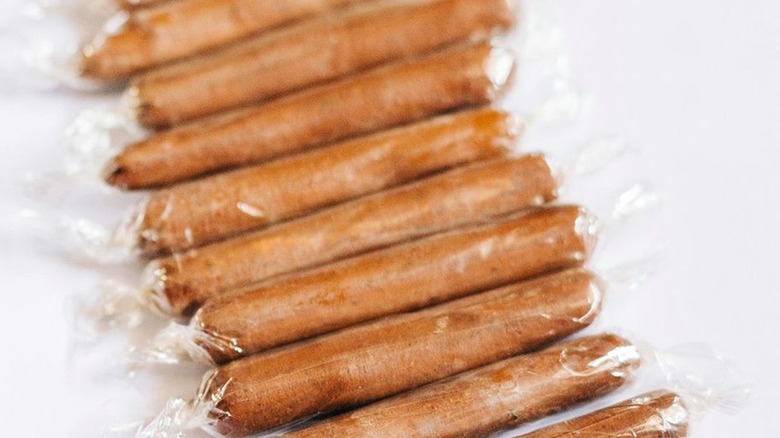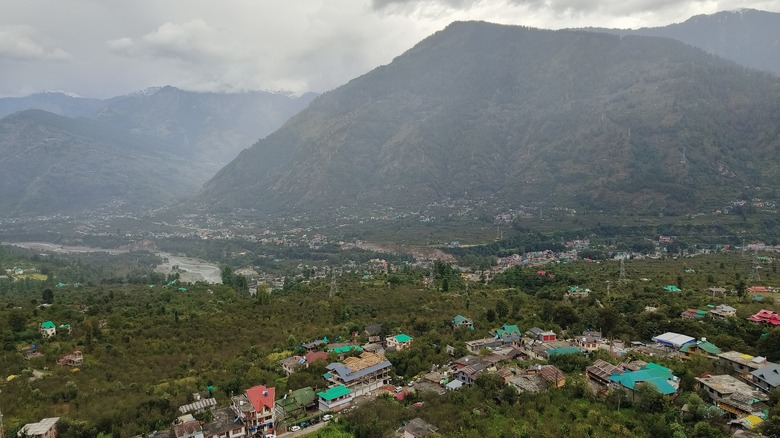No, That's Not A Candy Cigar. It's A Kalimpong Lollipop
Candy comes in all shapes and sizes, but one quality unifies them all: immediate appeal. Sure, some candies may be more nuanced in flavor than others, but memory is a powerful taste. Consume a certain sweet, and just one bite can reignite a moment from the past.
For natives of and visitors to Kalimpong, a small Himalayan town in the West Bengal region of India, a condensed milk lollipop often incites such sensations. Beloved in the region, the cigar-shaped candy is made with condensed milk. Straightforward in constitution, the lollipops are deliciously sweet and delicately flavored. Made with tasty alpine milk, they showcase the decades-long dairy tradition of Kalimpong.
Now a high-elevation icon, these lollipops are exported abroad and purchased during any well planned visit to Kalimpong. So how did a milk-based confection become linked with a town in India? It's all due to a single man's initiative and the resultant impact on the community.
Kalimpong dairy is to thank for these treats
The creation of these caramel-like lollipops is accredited to Father Andre Butty, a Swiss Christian missionary who founded Kalimpong's Swiss Welfare Dairy in the early 1950s. Introducing dairy-making techniques and machinery from abroad, Butty taught locals new job skills — and fresh flavors.
In addition to the production of cheeses and yogurt, the dairy was known for making condensed milk-based sweets by hand that were especially delicious thanks to locally sourced milk. Quickly, the lollipops became a popular delicacy in the town, with visitors buying them as souvenirs and exports being sent to neighboring countries.
Over the next several decades, the Kalimpong lollipop became increasingly interlinked with the town's identity, hence its name. However, in the '90s, the Swiss Welfare Dairy's operations ceased when Father Butty was no longer able to live in India legally. Though the production of Kalimpong lollipops has continued at a myriad of West Bengal offshoots, often helmed by former workers of the dairy, there's no longer a central producer of the famous treats.
How Kalimpong lollipops are made
Traditional production for Kalimpong lollipops starts by boiling milk down with sugar in a large wok, eventually resulting in rich brown condensed milk. After stirring, the condensed milk is poured on large tables to dry, then rolled by hand to form a distinct cigar-like shape. As demand for the treats grew, producers developed a more mechanized process using specialized equipment to make the lollipops in large batches.
However, with the closure of the Butty's dairy, smaller-scale producers reverted back to more handmade methods. Some lollipop fans would even make the candy at home and then sell it at markets. Today, manufacturing has picked up, with several brands distributing the candy. In addition to markets and stores around Kalimpong, the lollipops are available for sale online. They continue to be an icon of the region, with enthusiastic promotion from the local government. And with a sweet, creamy, and easy-to-like taste, the immediate appeal of the Kalimpong lollipop is easy to understand.


